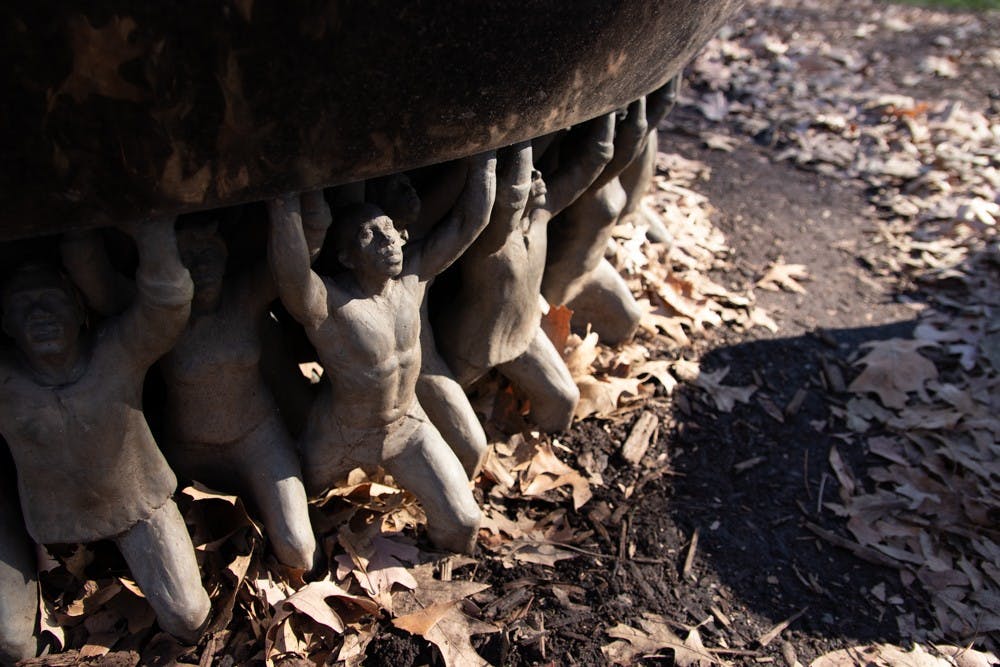In the first of a two-part webinar series, the Commission on History, Race and a Way Forward discussed the original motivation for the Unsung Founders Memorial and community responses from the time of the memorial's creation to its dedication.
The webinar, held Oct. 18, featured several panelists, including Byron Wilson, vice president of UNC’s 2002 senior class and one of the main organizers for the establishment of the Unsung Founders Memorial.
The memorial, a gift from the Class of 2002, was created to commemorate the enslaved men and women and their descendants who built and have sustained the life of the University from its founding.
The memorial is made up of five stone seats and a black granite tabletop, held up by 300 bronze figures. The size of the memorial is approximately two feet tall, which some community members said they feel is too small.
In recent years, University leaders have considered solutions to address the fact that the Unsung Founders Memorial has been sinking into the ground. The memorial was also vandalized by two individuals in 2019.
The webinar featured a prerecorded message from artist Do Ho Suh, who defended his decision not to use a pedestal in the memorial.
“I did not want to use a pedestal because to me, a pedestal represents traditional colonial power, elevating individuals who often have terrible records of imparting trauma,” Suh said. "Unsung Founders is different. It presents a group capable of the most profound strength and integrity. Those people must never be forgotten within or without the University walls."
Wilson shared some of the challenges involved in the proposal and establishment of the monument, including the location of the statue. He also said that at the time, the University "was not interested in the memorial."
“We held strong — it should go nowhere else other than in the oldest quad on campus, since it is there to memorialize the people who built the oldest quad on campus,” Wilson said. “And that was not a popular stance, but that was ours.”




